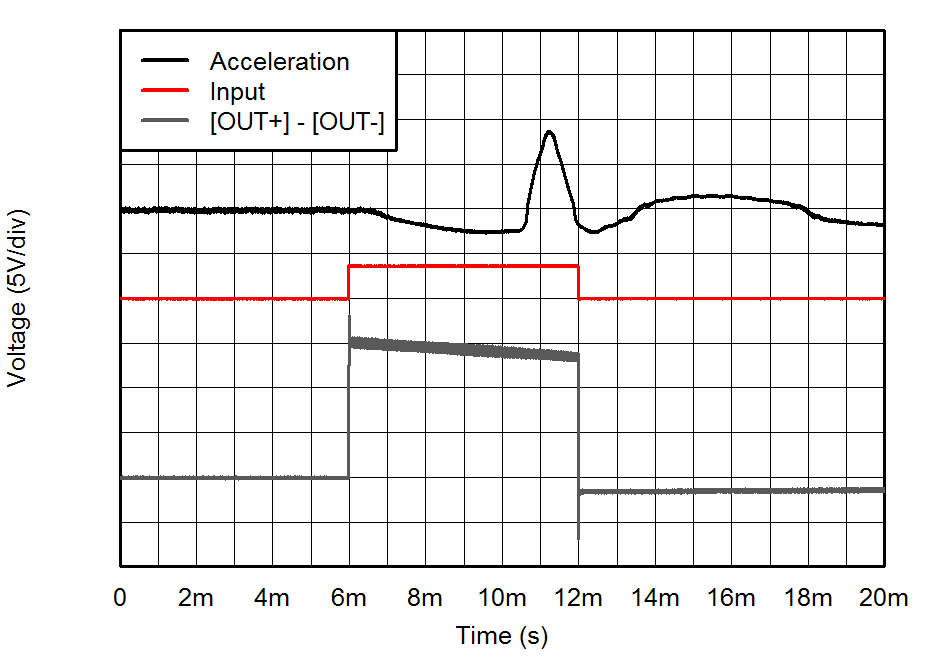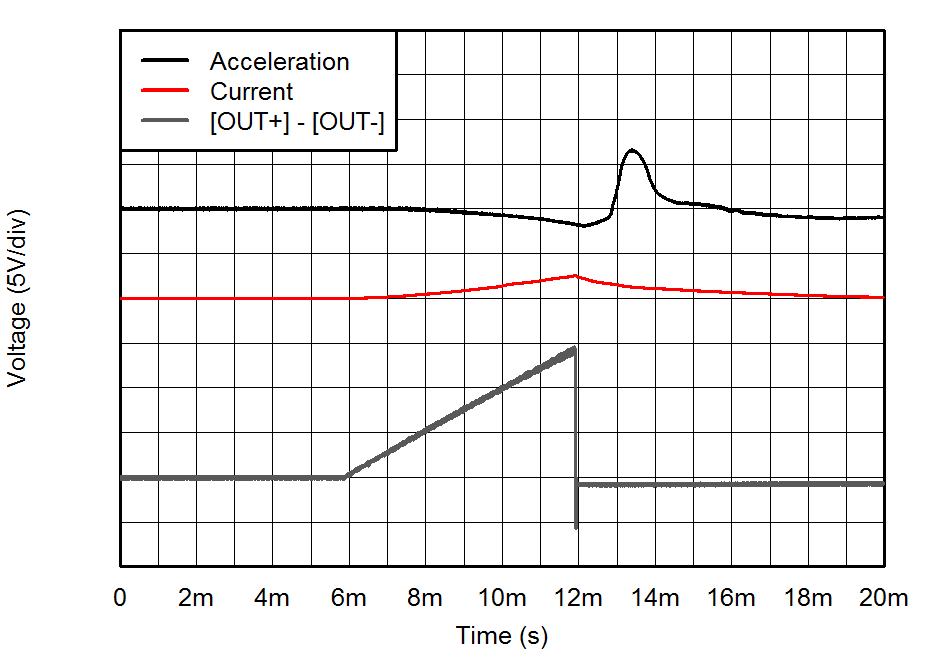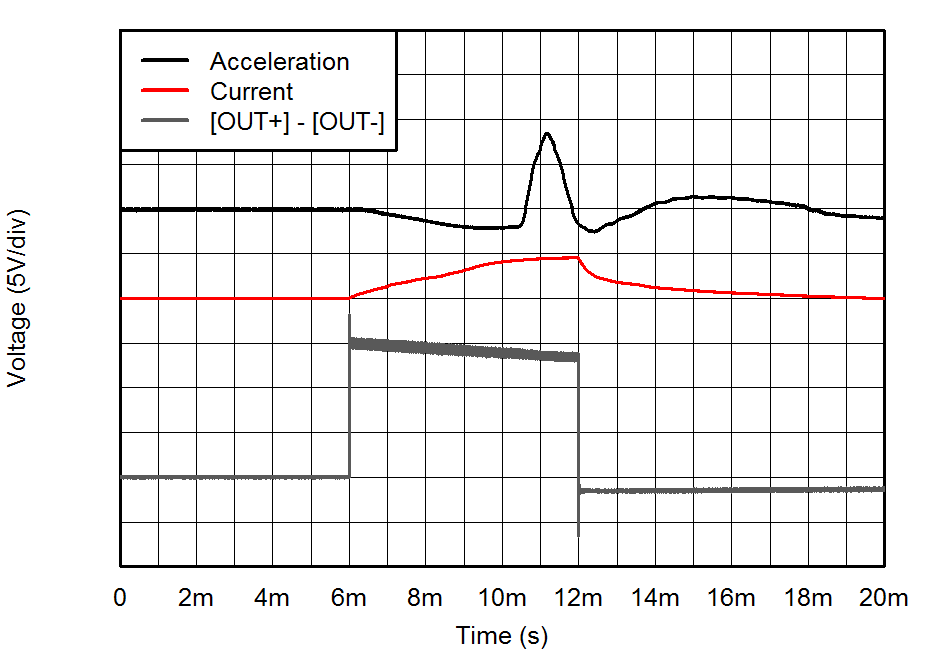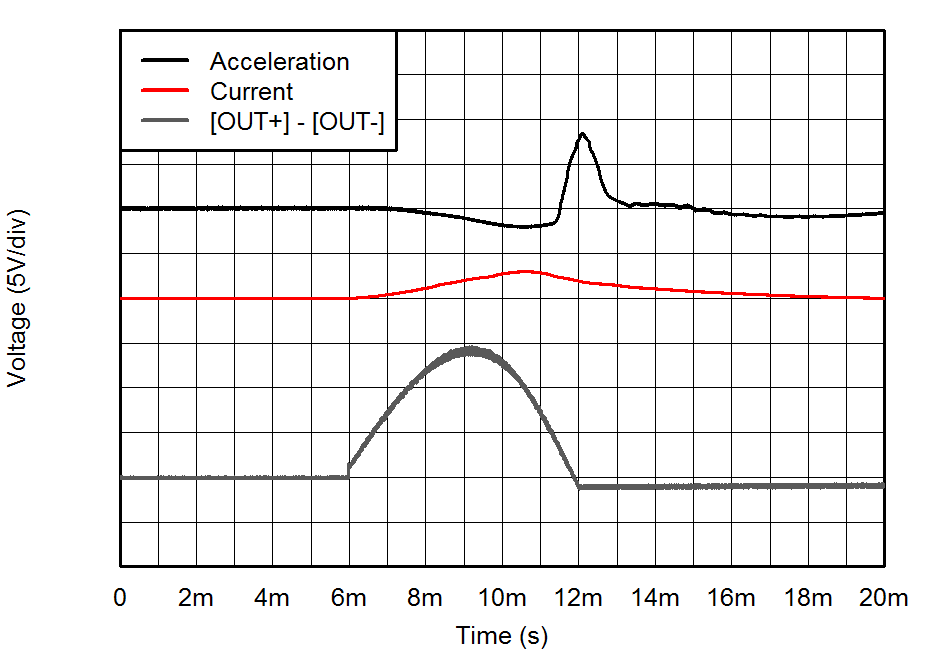SLOS919D June 2016 – November 2023 DRV2510-Q1
PRODUCTION DATA
- 1
- 1 Features
- 2 Applications
- 3 Description
- 4 Revision History
- 5 Pin Configuration and Functions
- 6 Specifications
- 7 Detailed Description
- 8 Application and Implementation
- 9 Power Supply Recommendations
- 10Layout
- 11Device and Documentation Support
- 12Mechanical, Packaging, and Orderable Information
Package Options
Mechanical Data (Package|Pins)
- PWP|16
Thermal pad, mechanical data (Package|Pins)
Orderable Information
8.2.1.3 Application Curves
These application curves were taken using an HA200 solenoid with a 100-g mass, and the acceleration was measured using the DRV-AAC16-EVM accelerometer. The following scales apply to the graphs:
- Output Differential Voltage scale is shown on the plots at 5-V/div
- Acceleration scale is 5.85-G/div
- Current scale is 2-A/div
 Figure 8-2 Voltage and Acceleration vs Time (Input Square Wave)
Figure 8-2 Voltage and Acceleration vs Time (Input Square Wave) Figure 8-4 Voltage and Acceleration vs Time (Ramp Wave)
Figure 8-4 Voltage and Acceleration vs Time (Ramp Wave) Figure 8-3 Voltage and Acceleration vs Time (Square Wave)
Figure 8-3 Voltage and Acceleration vs Time (Square Wave) Figure 8-5 Voltage and Acceleration vs Time (1/2 Sine Wave)
Figure 8-5 Voltage and Acceleration vs Time (1/2 Sine Wave)